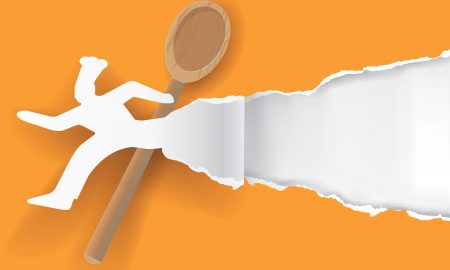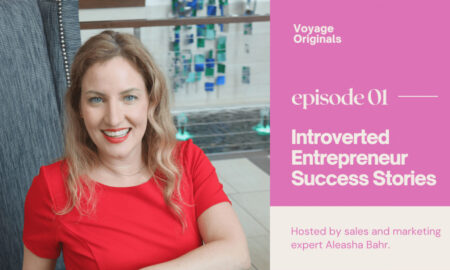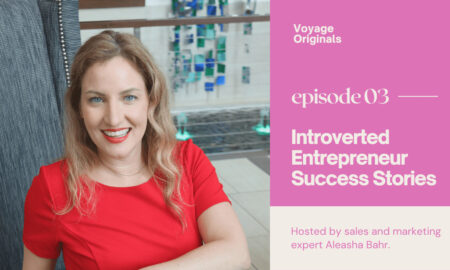

Today we’d like to introduce you to Taffeta Chime.
Hi Taffeta, please kick things off for us with an introduction to yourself and your story.
I’m a lifelong writer. I’ve been crafting stories and making up characters since I could hold a pencil. My first “book” was when I was 7. My parents and teachers saw that I obviously needed more of a chance to feed that creative need and put me in the gifted program, which had a creative writing contest that I entered when I was in second grade. My short story for the competition won 2nd place in the state and 1st place internationally–which showed me that not only did I enjoy this but maybe I was pretty good at it too!
I kept writing and writing, and my first writing job was when I was 14, when I covered the high school tennis matches for our county newspaper for a few dollars an article. (Now that I look back on it, that was a pretty good rate!)
In high school, my gifted teacher suggested we create an independent study through the entirety of my high school career to write and publish a novel. We concocted a four-year plan: two years to draft, one year to revise and edit, and one year to publish. I worked with my English teachers to do some extra reading and research about the process of writing a novel, to read books that were similar to the story I was planning to write, and to submit work to them to show them that I was on track. My junior year, in a business class, we had a job shadowing day, and my teacher explained to me that she didn’t know any authors I could shadow but she did know a print shop: Lightning Source Industries in LaVergne. Now, this was 2006, when print-on-demand self-publishing was still very fresh. I spent a day touring the facility and speaking to various representatives in different departments, one of whom was a sales rep who asked me about Christopher Paolini–one of the young authors I had read. His first book contract was apparently through LSI, then when he sold ten thousand copies through retail, Simon & Schuster bought him out, and now he’s a career-level author. My eyes lit up. Now, not only did I enjoy this, not only was I good at it, but maybe I could actually make it my career too. My first novel, Stoodie, was self-published and printed by LSI in 2007.
I went on to study English with a concentration in Creative Writing and Theatre at MTSU on a full ride scholarship as one of the inaugural Buchanan Fellows. My second novel served as my Honors creative thesis, following the same four-year plan I followed in high school. This novel, The Last, was published in 2011.
Then something interesting happened. I had planned to go on and pursue an MFA. I applied to ten schools around the country in varying levels of difficulty and competition. … And nowhere accepted me. All that confidence I had crumbled. Maybe I couldn’t make a career out of this. Maybe I wasn’t good at this.
I pivoted and took an opportunity to study abroad in China and learn Mandarin. Through my college experience, I learned about Linguistics and found I really enjoyed it alongside Creative Writing, and I had begun hanging out with international students, both as a volunteer ESL/EFL teacher and as just a friend to a lot of foreigners! In China, I continued writing; I took a side job as an English language editor at a bilingual magazine, and I wrote a lot of short stories, poems, and blogs about my experience as a foreigner in China. There, I met my now-husband, who wanted to study in the US with a second bachelor’s degree. When I returned to the US, I went to MTSU again for my MA in English and Foreign Languages, and my husband soon joined, getting his second BS in Concrete Industry Management. We were married a year later in 2014, and I took a job as an instructor at the ELS Language School at MTSU when I graduated in 2015.
I stayed at ELS for four years, though my role changed several times. I was an instructor, a student success advisor, an IELTS testing administrator, and a host parent, sometimes simultaneously. Through all this time, I was not writing much, other than more academic-type stuff. Life was just too demanding for creative writing, and I honestly fell into a depression because of it. A major piece of my life and identity was missing. My first daughter was born in 2019 and my depression worsened. I had perinatal depression, which starts in pregnancy and continues through postpartum. Of course, during this time, too, COVID was happening. My daughter’s age group was the last to receive vaccinations, so I was practically quarantined with her until 2022, when she was finally fully vaccinated and able to attend preschool.
Around this time, I started writing again. It started with just fun projects for myself: silly short stories, fanfiction, poetry, that kind of thing. I took on a few projects here and there, in particular, writing monthly articles for the faith-based media company Renew.org. I became pregnant, had a miscarriage, and then had a particularly difficult pregnancy after that. We decided not to be host parents to international students anymore because 1) we would soon be out of room, with two children, and 2) my difficult pregnancy required me to focus more on my own health and rest. So in 2023, I decided to start treating writing as a career again. I began freelancing and networking with local groups and events. And I haven’t stopped since.
Since 2023, I have had 5 short stories, 12 poems, and 16 articles published, with more coming. I’ve also started work on my first debut collection of poetry, which I hope to have ready for publication later this year. I’ve become more involved with my local writing community, including Poetry in the Boro, the Rutherford Arts Alliance, and MTSU Write.
Especially now that I have children, I want to show them that creativity is not a nicety but a necessity. Writing is a major part of my life, and I’ve seen what happens when I neglect it. I have no plans of stopping again. I do enjoy it, I am good at it, and I can make a career of it.
Can you talk to us a bit about the challenges and lessons you’ve learned along the way. Looking back would you say it’s been easy or smooth in retrospect?
Yes and no. I have been incredibly fortunate to have a great support system that has encouraged me to write through my life. My parents and teachers have supported me immensely, and I was able to go to school for writing. My community has an amazing network of writers. I am blessed, for sure. But writing is always an uphill battle, as most creative careers are. Imposter Syndrome is real. Publications and pay are feast or famine. Rejections happen often. There are often nay-sayers or, on the opposite extreme, people who overly romanticize the job. It is difficult to find time to write, but as with anything that needs to be a priority, I make time for it. And despite all of this, I keep writing because, as I learned in those dry years, it gets lonely to not have characters talking to each other and stories swirling in my mind.
As you know, we’re big fans of you and your work. For our readers who might not be as familiar what can you tell them about what you do?
For one thing, my writing often involves themes of multiculturalism and multilingualism. I have often gravitated towards foreigners in my life. The first person I smiled at as a baby was an Irish man. My father’s best friend lived in Brazil for decades, and growing up, when his family came home in the summers, his kids were like my cousins. In high school, I became very close with our foreign exchange students. In college, I was drawn to international students and foreigners. I felt at home abroad, and I found love with my Chinese husband. I’ve thought of our homestay students as my family, and I feel strangely at home when I’m surrounded by languages I don’t understand. So much of my writing explores these themes, about foreign-ness, multiculturalism, diversity, problems with racism and ethnocentrism … So often, we view those different as “other” until we see a connection with ourselves in them. I strive for my stories to be that connection, to let readers sympathize and empathize with characters who are different than what they might normally experience.
For another, I aim to depict hope, even if the road there is bleak. In college, there was a running theme in many of my writing classes that said negative emotions and experiences are easier to convey in creative forms because they are more complex. That thought really stuck with me, and I thought that couldn’t be true … So I made it an unofficial mission to try to portray the beautiful complexity of positive emotions and experiences like joy, peace, contentment, and happiness. This is not to say we shouldn’t explore themes of darkness and sadness; on the contrary, if we are to reflect reality (and have a satisfying arc of character development and conflict), we must represent these topics as well. But I try to do what’s considered the hard work and find hope as well. As someone with Depression, I find it to be a personal practice too, to allow myself to feel the lows but also search for the elements of hope and joy, even in my darkest moments.
And finally, along those lines, no matter what I’m writing, I try to depict truth. Even in my more fantastical fiction writing, I believe fantasy and science fiction are most engrossing and entertaining when they could be true. In my poetry, I often start with a moment or image from real life that makes me go “huh” and ponder its metaphorical or emotional significance. And of course, in my non-fiction, I do my best to accurately portray reality, its nuance, and its objectivity.
A piece I’m particularly proud of that encompasses all three of these points is a short story I wrote in 2013 in reaction to a video from the World Food Programme’s YouTube channel by photographer Marco Frattini called “Images Tell the Story of Refugees from Syria.” I was so touched by the stories of these women, their children, and the way they all found moments of hope and joy in the face of tragedy, and I was inspired to write a short fiction story that combined their experiences plus others’ I had heard. The story was called “Flowers of Lebanon.” It has been published twice, and it won the Martha Hixon Creative Expression Award at MTSU in 2013.
Where do you see things going in the next 5-10 years?
AI is making quick changes to writing–some of it good, most of it bad. Because it’s so unprecedented and quick, it seems like we’re all scrambling a bit, but I believe in the next few years, we will have more organizations and tools rise up like Created By Humans that will require responsible use and recognition of AI in creative fields. (That is, clearly identify AI-generated or assisted content vs. human-generated content, give credit to writers who have contributed to the large language models that feed AI, require legal ramifications for misrepresenting or misusing AI–including stealing human-generated content–, recognize the immense work and dedication that human writers do when creating their own work, etc.)
I also believe indie writers and small publishers will continue to grow in popularity, further diminishing the gap between “the big five” and the other, little guys. Writing and publishing are becoming more and more accessible, which will (hopefully!) lead to more representation of marginalized and silenced voices in media.
Contact Info:
- Website: https://bio.site/taffetachime
- Instagram: https://www.instagram.com/taffetachime/
- Facebook: https://www.facebook.com/TaffetaChime
- LinkedIn: https://www.linkedin.com/in/taffeta-chime-xu-81b464287/
- Twitter: https://twitter.com/TaffetaChime
- Other: https://www.tiktok.com/@taffeta.chime
















